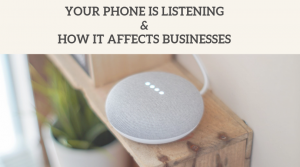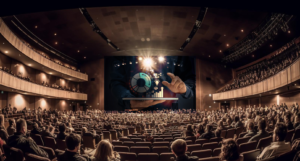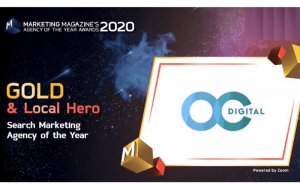Traditional or Digital marketing? Which would be better suited for my business?
For many businesses, small or large, one cannot deny the power and influence marketing has in the grand scheme of things. So much so that many have their own in-house marketing team or person and it’s not hard to see why. It helps drive traffic, create brand awareness and influence consumers purchase decision, the list goes on, all in a bid to obtain conversions or in layman’s terms – sales.
In this article, we’ll discuss more in-depth about the two types – Digital and Traditional, and at the end of it, we hope you might have a better sense of what works for you!
Traditional marketing is the conventional method of marketing that you and I have been exposed to at one point or another. They are usually hard to ignore and come in the form of various offline and promotional methods. Here are 5 of the most common categories they fall under:
Print – Magazines, Newspapers, Flyers
Broadcast – TV, Radio
Direct Mail – Catalogues, Newsletters, Brochures
Telephone – Telemarketing, SMS Marketing, App Notifications
Outdoor – Billboards, Bus Stop Signages, Posters
One can argue that some of these examples are slowly becoming outdated and rarely used but the fundamental concepts remain the same. They all follow the golden rule of 4P’s – Place, Price, Promotion and Product. They serve as a rule of thumb on the who, where, what, when, and how of marketing.
Product – How functional is the product? What is its USP (Unique Selling Point)? What makes this product different than my competitors and why would people purchase mine instead?
Price – At what price range would be ideal that consumers would be most willing to purchase my product? If I am selling a luxury good, would pricing it at a lower-than-average market price affect my brand image?
Place – Where should I place my product to gain the most traction? Are they my correct target audience?
Promotion – How can I get the word out about my product? How can I better highlight the various functionalities of my product to consumers? Are they enticed by discounts or bundle offers?
On the surface, digital marketing sounds very similar to traditional but there are subtle nuances that differentiate both. (Psst! Want to know more about the top 8 Digital Trends? Click here!)
The first example is their interaction level – take a billboard versus an online banner to promote a brand new car. The billboard is great at capturing a wide audience – office workers, students, and tourists. But what is the proportion of people who are actually their target audience? It is like casting a wide net into the sea and hoping to catch one or two fishes. Compared to an online banner that can be placed on a car enthusiast forum or website. The latter has a much higher chance of reaching the right audience and driving conversions. In addition, if a customer is interested and wants to find out more details, they can click on the banner which would most likely direct them to the landing page detailing the specifications and color options. None of which a billboard is able to do.
Another point is the Cost. Using the example above, a billboard or even a newspaper ad space could be very costly depending on the traffic and reach. The price is usually fixed regardless of the actual reach and leads generated, however, utilizing digital ad platforms such as Google Ads which uses a PPC (Pay per click) model, businesses are only charged when someone actually clicks on the ad. Not only is this much more cost-efficient, but it also provides us with more detailed feedback on the performance of the ad and to improve or optimize for future use. If we have very high impressions but low click rates, it could indicate that our ad is not appealing enough. Again, something the billboard ad is not able to quantify.
Another difference is control over the ad. With digital banners, any changes which need to be made immediately can be done almost instantly. With a few clicks, the contents can be changed easily. Compared to any print ads or broadcasts. Any changes would most likely incur additional costs and require a few hours or days of lead time!
So does this mean traditional marketing is dead? Not necessary. A car company would still need to open their showroom doors for potential customers to swing by for a test drive or view the vehicle up close. Fashion retailers would still use shopping center billboards to let customers know where they are located. Rather than one is better than the other, we propose incorporating both into any business. The same car company could tap into various Digital Marketing channels such as YouTube, Google Ads or Facebook Campaigns to generate interest and awareness for the brand. Once the interest has been gathered, Traditional Marketing methods like offline promotions, bundled servicing packages or even free branded gifts in the showroom can help push consumers into making that purchase. Working hand in hand to generate more sales, leads or brand awareness, depending on the company’s end-goal.
One thing is for sure, with the widespread increase in mobile phone and computer usage, fewer people are looking at the bigger screens and more people are looking at smaller ones. The sooner businesses incorporate some form of Digital Marketing effort into their marketing plan, the sooner prepared they will be for the future.
For another interesting read, check out our other marketing guides to help you and your business – The Importance Of Omnichannel Marketing.
Need help in consumer engagement? Fret not, call us today at +65 6343 0068 for a free, customized consultation!






